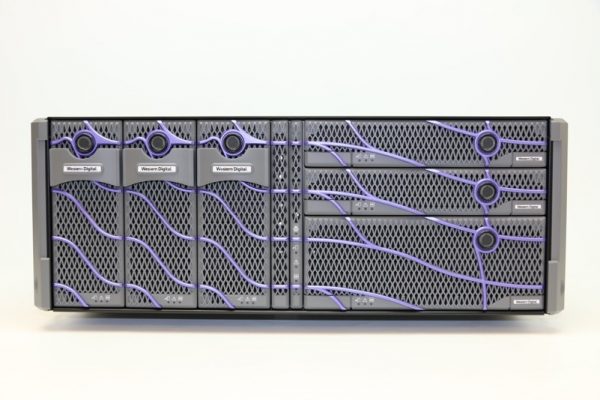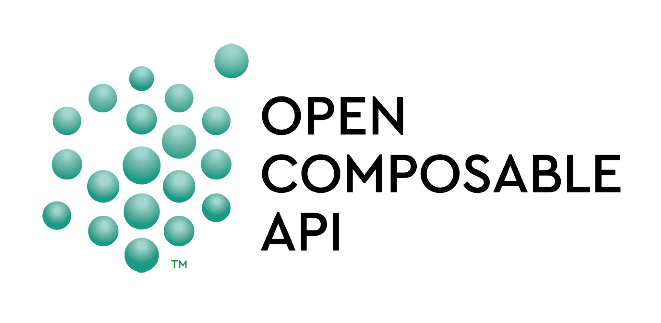Composable Disaggregated Infrastructure may still be a concept that’s a few years away, but it’s gaining fast traction as what the future of IT will look like. There are already customers deploying it today for real-world applications, and IDC estimates the market will reach $4.7 billion already in 2023.[1]
This morning at Flash Memory Summit, we announced the fastest NVMe-oF™ Open Composable Storage Platform, OpenFlex™. It’s not a coincidence that we chose this event for the announcement. Flash Memory Summit, taking place this week, is all about looking at the breakthroughs and innovation driving the future of storage and non-volatile memory (NVM).
I want to walk you through the announcement as well as some of the future composable technology and concepts we’re demonstrating at the event.
Composable Infrastructure – Today and Tomorrow

For those at the event, you have the opportunity to see a rack of these products and concepts in our booth #207. This is a great overview of new innovations that are helping to drive greater support and adoption of open, composable disaggregated infrastructure and showcasing some of the future and potential solutions we’re working on with the ecosystem.
Let’s walk through the rack from top to bottom.
Unleashing Storage Composability – OpenFlex F3100 and E3000
At the top of the rack you’ll find the OpenFlex E3000 and F3100. These are the first two products we launched to enable Open Composability, and we’re demonstrating them with two computational storage workloads in a dynamic open composable ecosystem with Xilinx and Eideticom.
The F3100 is a Fabric Attached Flash Device, providing up to 61TB of flash-based storage directly to ethernet attached hosts via NVMe-oF using RoCE V2. Performance is maximized – completely filling the bandwidth of dual 50 GbE connections to each device, and 99.99% latency is less than 40us.
The E3000 is an enclosure that enables up to 10 F3100 devices. It provides power and cooling, but does not aggregate bandwidth allowing each F3100 to operate at full performance. These fabric devices lead the industry in performance density for this class with up to 7.2M IOPs per rack unit (RU) and 39 GBps/RU with a raw capacity density of 205 TB/RU.
This is the fastest NVMe-oF Open Composable Storage Platform.
Next Generation Fabric Attached Compute Device

In the middle is a next generation fabric attached compute device. Just as F3100 disaggregates storage from a traditional server architecture, compute Fabric Attached Devices disaggregate the CPU. This way, the amount of compute, speed of compute, power of compute, and even the architectural generation of compute can be selected independently of the other resources (network, FPGA, GPU, flash, and disk).
A typical fabric attached compute device would include 1 or more CPUs, local memory, and of course, a fabric controller (Ethernet NIC). Similar to compute, or perhaps even a subset within compute are FPGA and GPU devices. These would include one or more FPGA or GPUs and a fabric controller. They can also then be scaled independently of the other fabric resources as needed.

Watch the webinar: How to Build and Deploy an Open Composable Infrastructure
Ultrastar® Data24-F – Inspired Composability in a Mainstream 2U24
Currently, one cannot pack enough compute resources in a 2U NVMe™ appliance to use all available IOPs from SSDs, and with higher capacity NVMe SSDs appearing, it is hard to use such capacity optimally in servers
The Ultrastar Data24-F concept is an NVMe-oF attached flash storage with up to 6 independent high-availability 100GbE connections, that can support up to 24 hot-swappable NVMe SSDs. It allows a shared Just a Bunch Of Flash (JBOF) solution that can connect to multiple hosts via a low latency fabric to utilize IOPs and capacity. The Data24-F executes the Open Composable API, enabling its resources for composition into virtual systems along with F3100.
Open Composability and the Open Composable Compliance Lab

We strongly believe that democratization of data infrastructure is a key component for future architectures. Composability is dependent on the support of an expansive, multi-vendor ecosystem of compute, networking and storage in order to create end-to-end interoperability, and to ensure data center customers have choice.
We’ve been driving open, composable infrastructure from day one that is open. OpenFlex was developed as an open form factor, both in the device design as well as in the software orchestration layer – the OC API. The Open Composability API will be publicly available to help enable vendor neutral solutions. We see scalability, disaggregation and extensibility as the key components to maximizing the potential of composable infrastructure.
I’m really excited to share that this morning we also announced the Industry’s first Open Composable Compliance Lab. We designed this lab in partnership with industry leaders like Broadcom and Mellanox, and with support from a variety of ecosystems players such as DriveScale, Kaminario, Xilinx and more. This lab is all about an open standards-based approach to help accelerate market adoption and ensure customers with rigorous compatibility testing, for proven solutions they can adopt with confidence.
Learn more:
- See our flash innovation at Flash Memory Summit
- Webinar: How to Build and Deploy an Open Composable Infrastructure
- Get to know the OpenFlex Composable Architecture




